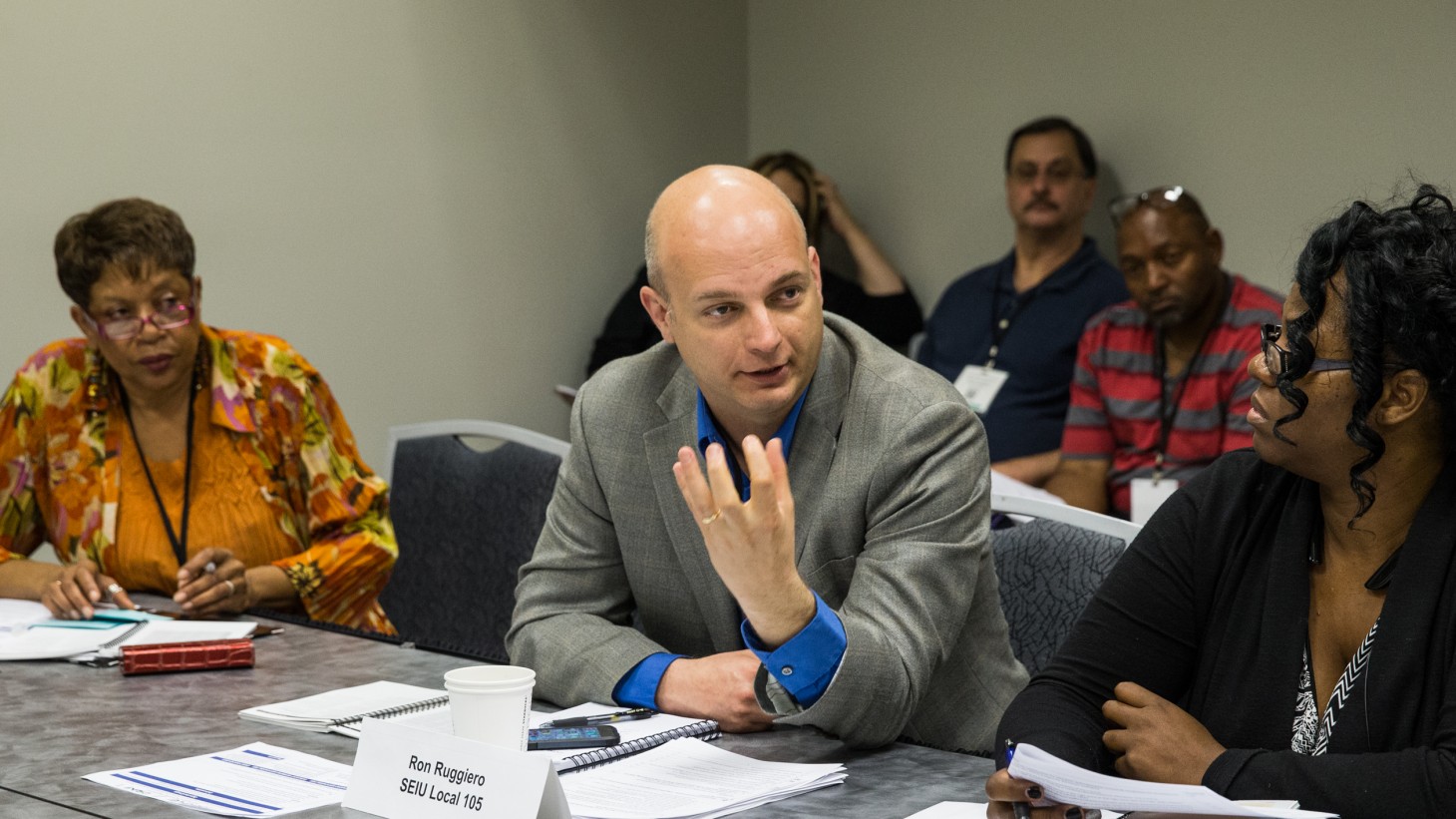Hank Spring 2016
See the whole issueCollective Causes, Collective Action

To truly reduce workplace stress and burnout, workers must have the power to make changes that improve their departments, says Ron Ruggiero, president of SEIU Local 105 in Colorado.
Coalition leaders call for a fresh emphasis on addressing root causes of workplace stress
Eager for strategies to tackle workplace stress, a group of nurses in Southern California—including Denise Duncan, RN, president of UNAC/UHCP—sought out a workshop on the issue.
Workplace stress undermines employee health and safety, they knew, and erodes patient care and service.
But what they learned at the conference, which was offered by an outside organization, rang hollow.
“They told us the work isn’t going to go away: Have a hot bath, light candles and take a deep breath,” says Duncan. “You can work a 12- or 14-hour day. Go home and relax. The same workload is going to be there again the next day.”
A majority of workers in the United States—especially those in health care—tell researchers their main source of stress is at work, not home. Long hours, job insecurity, poorly designed workflows and fear of violence or injury top nearly every list of common causes.
Focusing on the individual’s behavior may help a person cope with such issues, Duncan says, but does nothing to address the root of a problem that some studies suggest affects three in four U.S. workers. Part of what’s needed, she says, is more accountability from both management and the unions to fulfill the National Agreement’s commitment to fixing backfill shortages. The safe-staffing campaign UNAC/UHCP ran last year was part of that call to action.
Duncan and her fellow leaders in the Coalition of Kaiser Permanente Unions want to step up the conversation on workplace stress and make sure it:
- includes worker voices on scope of practice and other issues
- addresses unhealthy work environments
- develops resources in partnership
“We have talked about work-life balance. I am not sure there is one yet,” Duncan says. “We are at a tipping point.”
Opportunity for action
“Issues related to workplace stress are often collectively caused,” says Ron Ruggiero, the president of SEIU Local 105 in Colorado. “They need a collective solution.”
Kaiser Permanente is not immune. In a survey done before 2015 National Bargaining, 94 percent of workers represented by a coalition union placed a high priority on reducing stress in the workplace. Scores on the “KP supports me in having a healthy and balanced life” question on the annual People Pulse survey have stayed flat, with mid-range favorable ratings, from 2007 through 2015.
But partnership and unit-based teams offer an opportunity for action, says Ruggiero, whose union represents 3,000 KP employees.
“At each and every worksite,” he says, “workers should be listened to and solutions could be figured out—and implemented.”
